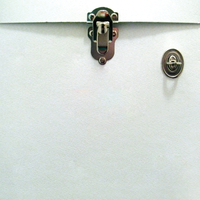
Lead Image © Marqs, photocase.com
Password management with FreeIPA
Safely Stored
Passwords need to be long, contain as many characters as possible, and use special characters and numbers. If you do this, then your password is secure, but unfortunately very hard to remember. Consequently, there are a variety of tools that let you deposit hard-to-remember passwords in a type of safe. The safe in turn is protected by a master password, and the passwords it contains are only released if you enter the password correctly. However, the user is then usually given access to the complete inventory of the safe. In the open source world, the KeePass [1] tool is a well-known candidate for this job.
Key Recovery Agent
Key Recovery Agents (KRAs) offer a different type of password safe. They are often part of a larger identity management solution, offering both users and services different forms of password safes – known as password vaults [2]. These are then available not only locally on a client, but throughout the network. The idea is that lost private user keys can be restored, since a copy is deposited in the password safe.
Version 4.2 or newer of the FreeIPA Identity Management framework also features password vaults, where you can store all sorts of data safely. When the data are stored, they are encrypted with a session key. If necessary, this is encoded with another symmetric or asymmetric key. The result is a package consisting of the actual secret (the data) and the keys used. Both together are encrypted again with the public key of the KRA instance and sent to the FreeIPA system, where the whole package is unpacked with the KRA instance's private key. The KRA instance thus gains access to the keys and the actual secret. The secret is again encoded with a storage key, before it is finally deposited on the LDAP back end. An escrow officer can gain access to a safe
...Buy this article as PDF
(incl. VAT)
Buy ADMIN Magazine
Subscribe to our ADMIN Newsletters
Subscribe to our Linux Newsletters
Find Linux and Open Source Jobs
Most Popular
Support Our Work
ADMIN content is made possible with support from readers like you. Please consider contributing when you've found an article to be beneficial.






